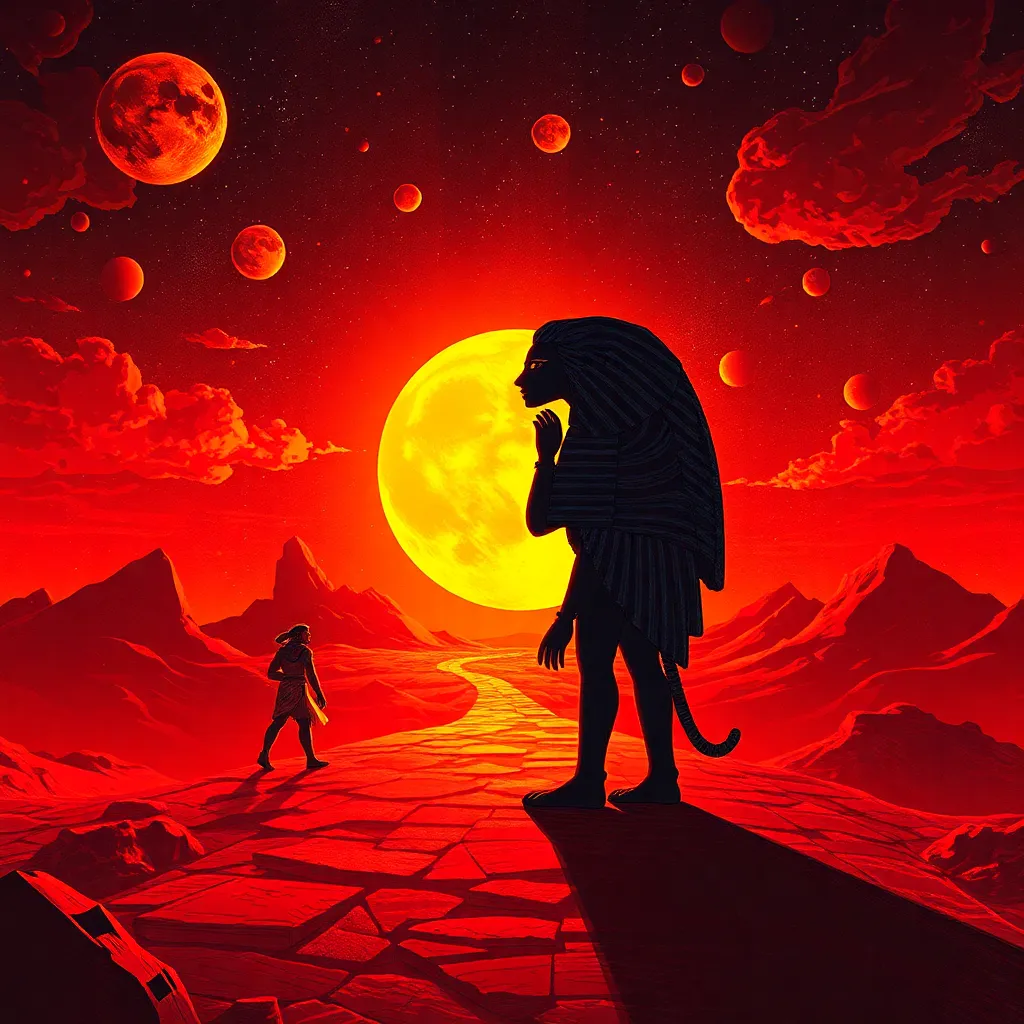The Myth of the Sun’s Path: Ra’s Daily Journey
I. Introduction
The sun has held a profound significance in ancient cultures around the world, often personified through deities that embody its life-giving and destructive powers. In ancient Egypt, the sun god Ra was central to their mythology, representing not just the physical sun, but also the cycles of life, death, and rebirth. This article aims to explore Ra’s daily journey across the sky, examining the symbolism and mythological significance of this celestial voyage.
II. Ra in Ancient Egyptian Mythology
In the rich tapestry of Egyptian cosmology, Ra occupies a paramount position as the god of the sun. His role extends beyond mere light; he is a creator god and a symbol of order and stability in a world often threatened by chaos.
- Attributes and Symbolism: Ra is often depicted as a man with the head of a falcon adorned with a sun disk. He embodies attributes such as power, authority, and the divine right to rule.
- Comparison with Other Sun Deities: Similar to Ra, other cultures also revered sun gods, such as Apollo in Greek mythology and Helios in Roman beliefs, each representing the sun’s importance in their respective societies.
III. The Daily Journey of Ra
Ra’s journey across the sky is a vivid representation of the daily cycle of life and death. The sun rises in the east, travels across the sky, and sets in the west, symbolizing not just the passage of time but also the continuity of life.
- Dawn: At dawn, Ra rises, symbolizing the birth of a new day and the triumph of light over darkness.
- Midday: At noon, Ra is at his zenith, representing strength, power, and the peak of life.
- Dusk: As Ra sets, he begins his journey into the underworld, signifying the inevitable cycle of death.
This journey is extensively represented in Egyptian art and literature, with many depictions of Ra in various forms, showcasing his importance in the daily lives of the ancient Egyptians.
IV. Ra’s Nightly Voyage
As the sun sets, Ra embarks on a perilous journey through the underworld, a realm filled with both danger and opportunity. This nocturnal voyage is crucial for understanding the complete myth of Ra.
- Encounters with Enemies: Throughout the night, Ra faces various adversaries, most notably Apophis, the serpent of chaos. This eternal battle symbolizes the struggle between order and chaos.
- Symbolism of Rebirth: Each morning, Ra’s triumphant return from the underworld represents rebirth and renewal, a fundamental theme in Egyptian mythology.
V. The Cosmic Battle: Light vs. Darkness
The duality of Ra’s journey embodies the eternal conflict between light and darkness. This concept is prevalent throughout Egyptian mythology, where light is associated with life, truth, and order, while darkness embodies chaos and destruction.
- Cultural Interpretations: The ancient Egyptians viewed light as a divine gift, essential for life, while darkness was often feared and associated with the unknown.
- Importance of Balance: The cycle of day and night reflects the need for balance in the universe, a core belief in ancient Egyptian spirituality.
VI. Ra’s Influence on Agriculture and Society
Ra’s influence extended beyond mythology into the very fabric of Egyptian society, particularly in agriculture and governance. His cycles directly impacted farming practices and the annual flooding of the Nile.
- Impact on Farming: The sun’s cycles determined the planting and harvesting seasons, crucial for the sustenance of the population.
- Religious Practices: Ra was central to many religious festivals, where rituals were performed to honor him and ensure a bountiful harvest.
- Integration into Daily Life: Ra’s presence was felt in governance, where Pharaohs claimed divine right through their association with the sun god.
VII. Artistic Representations of Ra’s Journey
Ra’s journey has been immortalized in countless artistic representations throughout ancient Egypt. From temple reliefs to papyrus scrolls, the imagery surrounding Ra is rich and varied.
- Iconography: Temples and tombs often feature Ra depicted as a falcon or a man with a solar disk, emphasizing his importance in the afterlife.
- Ancient Manuscripts: Texts such as the “Book of the Dead” illustrate Ra’s journey, providing insights into ancient beliefs about the afterlife.
- Modern Interpretations: Ra’s myth has inspired various modern adaptations, showcasing the enduring relevance of his story in contemporary culture.
VIII. Conclusion
Ra’s significance in ancient Egyptian mythology and his daily journey across the sky encapsulate the essence of life, death, and rebirth. This myth not only highlights the importance of the sun in Egyptian culture but also reflects broader themes of balance and the cosmic order.
As we reflect on the cultural importance of sun mythology, it becomes clear that ancient narratives like Ra’s journey provide valuable insights into human civilization’s understanding of the natural world. Appreciating these stories allows us to connect with the past and understand the foundations of our present beliefs and practices.




